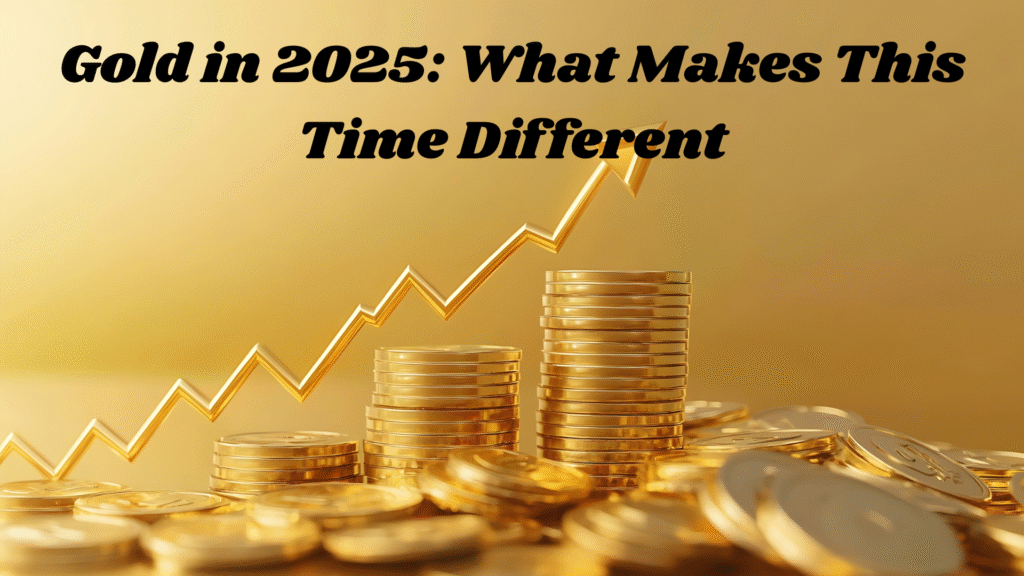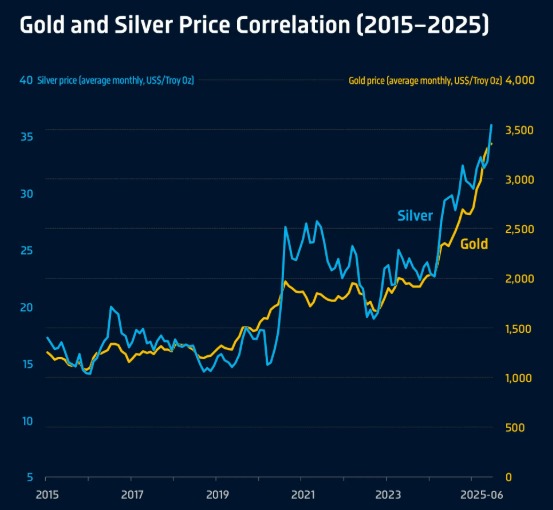The Timeless Shine in a Modern Market
In 2025, global stock markets are making headlines. However, another player has quietly emerged: gold. For the first time in history, it has crossed $4,000 an ounce. This milestone reminds us that even in an age of digital assets and AI-driven markets, this ancient metal still earns trust. Some buy it as an investment, while others keep it as a tradition. But for everyone, it represents enduring value.

More Than an Asset, A Blend of Emotion and Belief
Gold is different in finance. It doesn’t earn rent, interest, or dividends, yet people still buy it. It’s not simply an asset because it doesn’t produce anything. It’s not a complete commodity either since it has limited industrial use. It also isn’t fully a currency because you can’t use it to make purchases at a café. About three-fourths of global demand comes from jewelry and investment. These areas are influenced by emotions and beliefs rather than practical use. Maybe that’s what makes gold special; it’s not about what it does, but what it represents.

What Really Moves Gold: Inflation, Fear, and Real Rates
If gold doesn’t generate income, what drives its price? The answer is inflation, fear, and real interest rates. When inflation rises, paper money loses value. This makes gold look more appealing. In uncertain times, whether due to war, elections, or a financial crisis, people turn to gold for emotional security. Also, when real interest rates, nominal rates minus inflation, drop near zero, holding gold becomes appealing because the cost of not earning interest is low. In short, gold thrives on instability.
The 2025 Surge — A Perfect Storm of Forces
This year, three forces have come together. Inflation is still high. Central banks are suggesting possible rate cuts. Global politics are more tense than ever. As a result, gold prices have increased by nearly 26% in just six months, hitting new highs. Central banks, especially from Asia and the Middle East, have added over 1,200 tonnes to their reserves. For these banks, gold is more than just a shiny metal; it symbolizes financial independence in a world that feels increasingly uncertain.
The Curious Twist — Gold and Stocks Rising Together
Traditionally, gold and stocks move in opposite directions. But 2025 has changed that. Both are rising together. Investors now view gold not just as a safety net but also as a symbol of balance in their portfolios. It represents a wager on fear and a sign of confidence. In a time when everything, from currencies to companies, seems digital and uncertain, the physical presence of gold feels reassuring.
The True Value — A Quiet Form of Confidence
Gold’s value doesn’t come from how productive it is; it comes from its lasting nature. It doesn’t promise returns, but it offers something more important: stability. In 2025’s fast-changing world of algorithms and innovation, gold stays a quiet symbol of trust. It reminds us that sometimes the most valuable things are not those that change, but those that endure. Perhaps that is the real wealth gold has always provided—not profit, but peace of mind.


